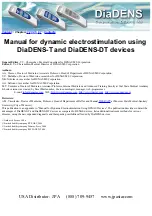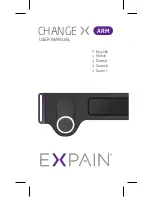
petsafe.com
3
Proper fit of the receiver collar is important. A receiver collar worn for too long or made too tight on your pet’s neck may
cause skin damage, ranging from redness to pressure ulcers. This condition is commonly known as bed sores.
•
Avoid leaving the receiver collar on your pet for more than 12 hours per day.
• When possible reposition the collar on your pet’s neck every 1 to 2 hours.
• Check the fit to prevent excessive pressure; follow the instructions in this product manual.
• Regularly recheck the fit to prevent excessive pressure; follow the instructions in this product manual.
• You may need to trim the hair in the area of the contact points. Never shave your pet’s neck; this may lead to a rash
or infection.
• Never connect a leash to a collar with contact points. It will cause excessive pressure on the contact points.
• When using a separate collar for a leash, do not put pressure on the receiver collar.
• Wash your pet’s neck area and the contact points of the receiver collar weekly with a damp cloth.
• Examine the contact area daily for signs of a rash or a sore.
• If a rash or sore is found, discontinue use of the receiver collar until the skin has healed.
• If the condition persists beyond 48 hours, see your veterinarian.
• For additional information on bed sores and pressure necrosis, please visit our website.
• Proper training of your pet is essential to successfully using the system. During the first 2 weeks of training, do not use
the system without direct supervision of your pet.
• The receiver collar should not be on your pet when the system is tested. If it is, your pet may receive an
unintended correction.
• The boundary zone must be tested whenever an adjustment is made to the transmitter setting to prevent unintended
corrections to your pet.
• Always remove your pet’s receiver collar before performing any fence transmitter testing. This will prevent
unintended corrections.
• To prevent an unintended correction, after the boundary flags have been placed, be sure to set the static correction
on the receiver collar back to level 1, which is tone only.
• To prevent an unintended correction, remove the receiver collar from your pet when indoors.
• Never remove power from the system when the collar is on the pet. This may activate the receiver collar.
• Radio Systems Corporation recommends the use of an Uninterruptible Power Supply (UPS) for use with your wireless
fence. Should the power go out at your home, your pet will be unprotected. Power outages can be unpredictable,
and the use of a UPS will provide you with some time to properly restrain your pet.
In rare instances, if your pet is near the boundary at the time when the power fails, it is possible that your pet will receive a
correction. This correction will stop after a 15 second timeout period has been reached. This is due to the operation of the
collar: the collar is activated by the absence of the containment signal.
While results will vary depending on the UPS manufacturer’s specifications the following are typical examples to guide
your choice of UPS:
• Using a 400 VA UPS a consumer should expect 3 hours of backup time.
• Using a 900 VA UPS a consumer could expect 8 hours of backup time.
• To prevent an unintended correction, after the boundary flags have been placed, be sure to set the static correction
on the receiver collar back to Level 1 tone only.
• You should expect hundreds of recharge cycles from your battery; however, do not charge your receiver collar every
night. Charging too often can reduce battery life.
• Charge your receiver collar when the receiver indicator light blinks yellow; or when the light blinks red.
• Do not place anything on the top of the transmitter or cover any ventilation holes. This may overheat the transmitter
and cause early transmit failure.
• Do not place transmitter in a closet or any other confined, unventilated area.
• Do not place transmitter on or near a metal surface.
Summary of Contents for Stay & Play PIF00-13663
Page 1: ......




































